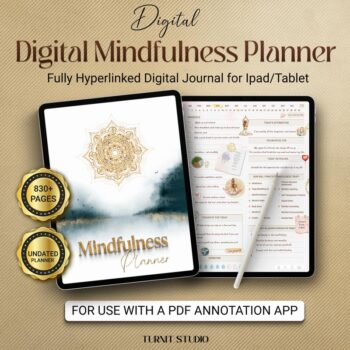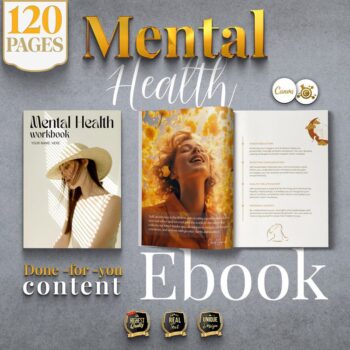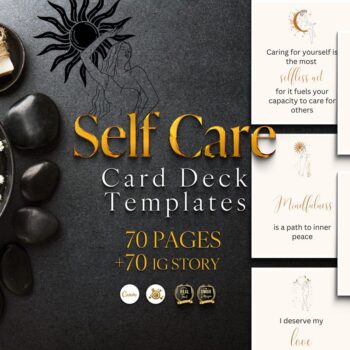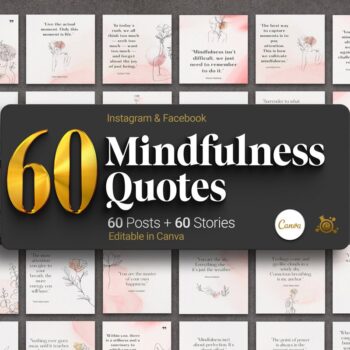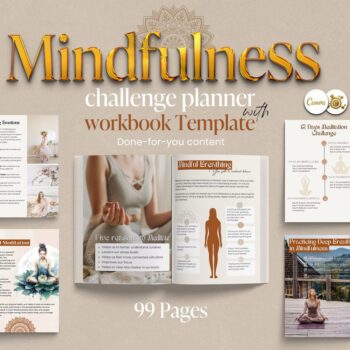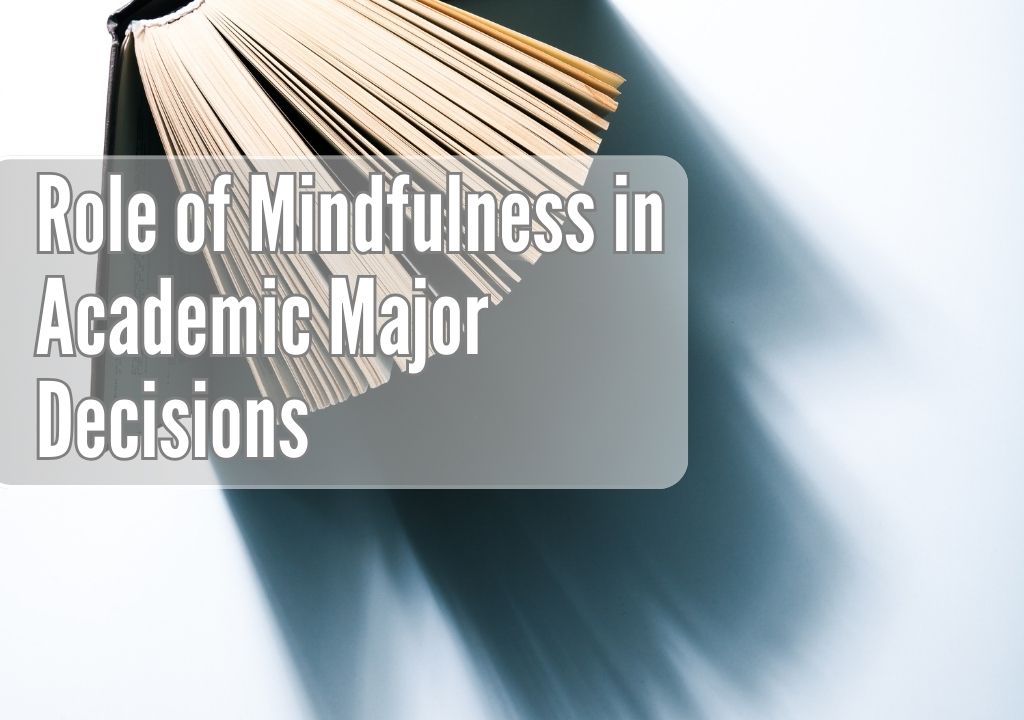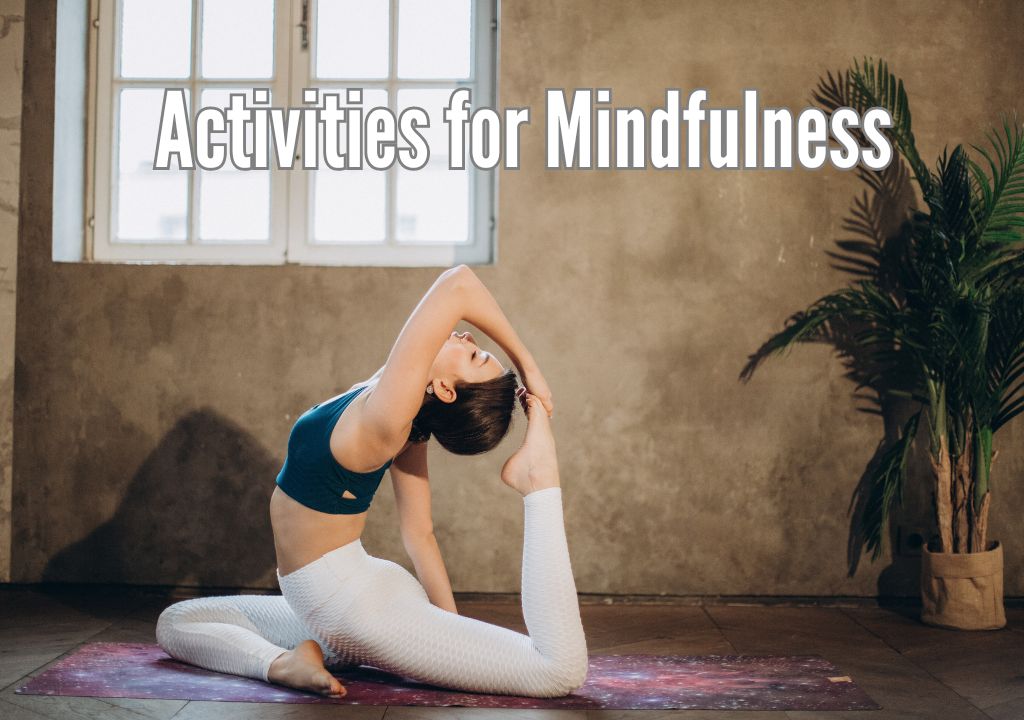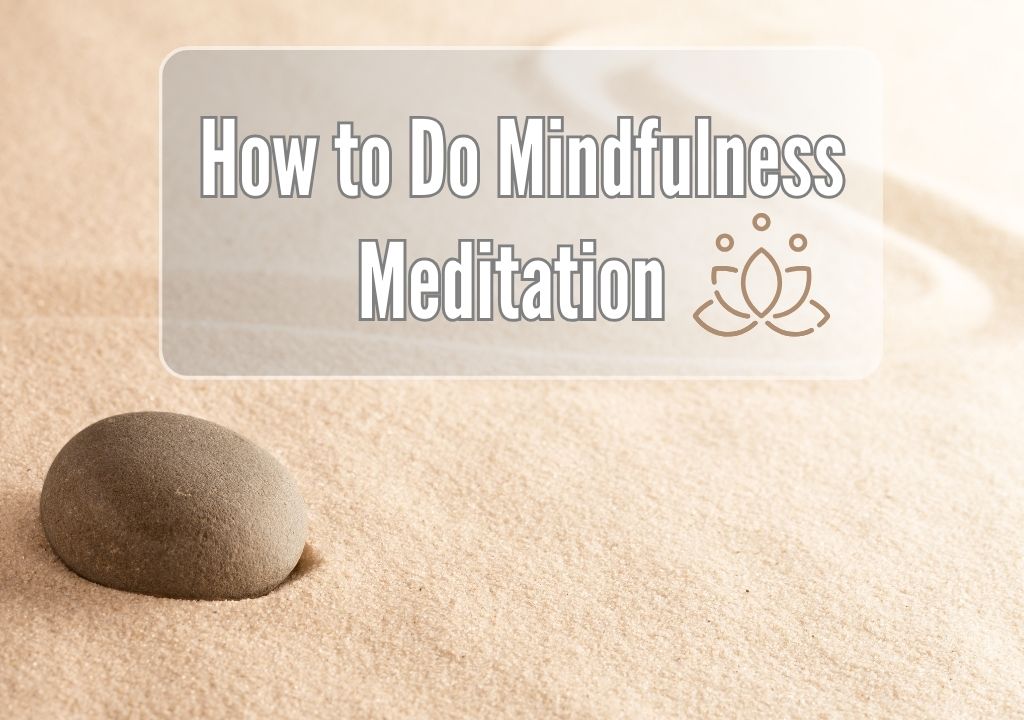Blog
The Benefits of Mindfulness: A Comprehensive Guide
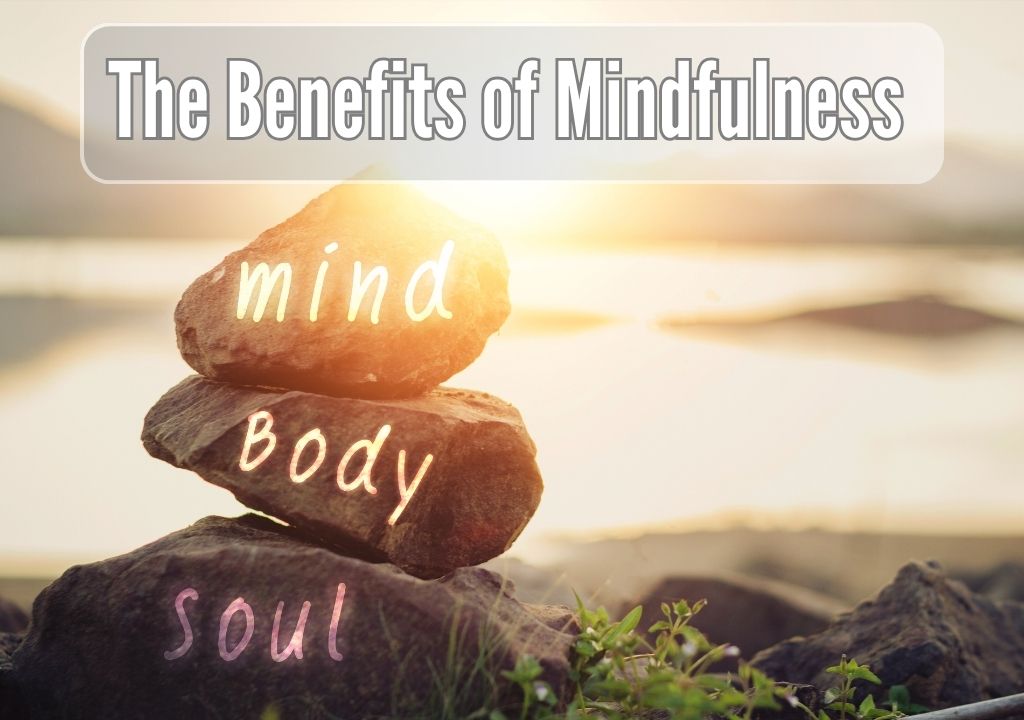
Mindfulness has become quite a buzzword lately, and for good reason! In this guide, we’re going to dive deep into what mindfulness and its benefits are all about, from its roots to its modern-day applications.
By practicing mindfulness, you can experience a whole range of positive changes in your life, like feeling less stressed, being more focused, and enjoying better emotional well-being. So, let’s go on this journey together as we discover the incredible power of mindfulness. And hey, we’ll also explore how using a mindfulness planner can supercharge the benefits you get from your mindfulness activities. Ready to dive in?
IN THIS ARTICLE
Understanding Mindfulness
Before we embark on our journey through the world of mindfulness, let’s first grasp its essence.
Defining Mindfulness
Mindfulness is the state of being fully present and engaged in the present moment. It involves intentionally paying attention to experiences, thoughts, and emotions without judgment or attachment. By cultivating mindfulness, individuals develop awareness, acceptance, and compassion towards themselves and others.
Practicing mindfulness can have a profound impact on one’s mental well-being. Research has shown that regular mindfulness meditation can reduce stress, anxiety, and depression. It can also improve focus, memory, and overall cognitive function. By incorporating mindfulness into daily life, individuals can enhance their emotional regulation and increase their capacity for empathy and understanding.
The History and Origins of Mindfulness
The origins of mindfulness can be traced back to ancient Eastern practices, particularly within Buddhist traditions. However, it wasn’t until the late 20th century that mindfulness gained prominence in the Western world, thanks to the efforts of individuals like Jon Kabat-Zinn, who popularized mindfulness-based stress reduction programs.
Ancient texts such as the Satipatthana Sutta, a foundational discourse on mindfulness attributed to the Buddha, provide insights into the early teachings of mindfulness.
The practice of mindfulness was originally intended to help individuals achieve liberation from suffering by developing insight into the nature of reality. Over time, mindfulness evolved beyond its religious roots to become a secular practice accessible to people of all backgrounds and beliefs.
The Science Behind Mindfulness
Now let’s explore the scientific foundations of mindfulness and discover its profound effects on both the mind and body.
The Psychological Impact of Mindfulness
Scientific research has demonstrated the profound psychological benefits of mindfulness. Regular practice has been shown to reduce stress, anxiety, and depression, while enhancing overall mental well-being. Mindfulness helps individuals develop emotional resilience, improve concentration, and cultivate positive relationships.
Furthermore, mindfulness has been linked to increased self-awareness and a greater sense of compassion towards oneself and others. By fostering a non-judgmental attitude, individuals can learn to accept their thoughts and emotions without getting overwhelmed by them. This acceptance can lead to a more balanced and harmonious mental state, allowing for greater clarity and peace of mind.
The Physical Health Benefits of Mindfulness
Beyond psychological well-being, mindfulness also offers significant physical health benefits. Studies have indicated that mindfulness can lower blood pressure, reduce chronic pain, and boost the immune system. Additionally, it has been found to promote healthy sleep patterns and improve overall vitality.
Moreover, the practice of mindfulness has been associated with a decrease in inflammation in the body, which can help prevent various chronic diseases. By reducing the body’s stress response and promoting relaxation, mindfulness can have a positive impact on physical health and overall longevity. Incorporating mindfulness into daily routines can lead to a holistic approach to well-being, addressing both the mind and body for optimal health.
Mindfulness Techniques and Practices
Mindfulness activities involves a variety of techniques and practices that nourish the mind, body, and spirit. From meditation to mindful movement, each approach offers a unique pathway to presence and well-being. Let’s explore some of these techniques in depth to understand how they contribute to a more mindful and fulfilling life.
Mindfulness Meditation
Mindfulness meditation is a cornerstone practice that involves focusing one’s attention on the breath or a particular object of awareness. It cultivates a deep sense of presence and helps individuals recognize and observe their thoughts without getting caught up in them. Regular meditation practice fosters clarity, calmness, and insight.
Engaging in mindfulness meditation can lead to a myriad of benefits beyond mental clarity. Research has shown that consistent meditation practice can improve focus and attention span, boost immune function, and even reduce symptoms of anxiety and depression. By setting aside dedicated time each day for meditation, individuals can create a space for self-reflection and inner peace.
Mindful Eating
Mindful eating encourages individuals to savor each bite and engage their senses fully during meals. This practice promotes a healthy relationship with food, as it increases awareness of hunger and satiety cues, reduces overeating, and fosters a sense of gratitude for the nourishment received.
When practicing mindful eating, individuals are encouraged to slow down, chew their food thoroughly, and pay attention to the flavors and textures of each bite. By being fully present during meals, people can better appreciate the effort that goes into preparing their food, as well as the nourishment it provides for their bodies. This heightened awareness can lead to a more balanced and intuitive approach to eating, promoting overall well-being.
Mindful Movement
Mindful movement involves integrating mindfulness into physical activities such as yoga, walking, or tai chi. By paying attention to bodily sensations and movements, individuals enhance their mind-body connection, improve flexibility and balance, and reduce stress and tension in the body.
Digital Mindfulness Planner
Digital Mindfulness Planner for iPad, GoodNotes, Healing Anxiety and Self Care
Through mindful movement practices, individuals can cultivate a deeper appreciation for the capabilities of their bodies and the interconnectedness of physical and mental well-being. Whether practicing gentle yoga poses or engaging in a mindful walk in nature, the focus on breath and movement can help individuals release tension, increase body awareness, and promote a sense of relaxation and vitality. Incorporating mindfulness into movement not only benefits physical health but also nurtures a sense of inner peace and harmony.
Implementing Mindfulness in Everyday Life
Mindfulness is a powerful practice that can be integrated into various aspects of daily life to promote overall well-being and inner peace. By cultivating mindfulness, individuals can enhance their awareness of the present moment, improve their ability to cope with stress, and foster a deeper sense of connection with themselves and others.
Mindfulness at Work
Mindfulness can be a transformative tool in the workplace, offering numerous benefits to both employees and employers. By incorporating mindfulness practices such as mindful breathing exercises, setting intentions for the day, and practicing gratitude, individuals can enhance their focus, creativity, and emotional intelligence. This can lead to a more positive work culture, increased job satisfaction, and improved overall performance.
Mindfulness in Relationships
Practicing mindfulness in relationships can significantly enrich the quality of connections with others. By approaching interactions with presence, compassion, and non-judgment, individuals can foster deeper intimacy, trust, and understanding in their relationships. Mindful communication techniques, such as reflective listening and expressing gratitude, can help cultivate a sense of mutual respect and harmony.
Mindfulness for Stress Management
Today in our lives, stress has become a common experience for many individuals, impacting their mental and physical well-being. Mindfulness offers a holistic approach to stress management by encouraging individuals to observe their thoughts and emotions without judgment, engage in relaxation techniques like body scans and progressive muscle relaxation, and cultivate a mindset of acceptance and resilience.
This mindful approach to stress can empower individuals to respond to challenges with greater clarity and composure, ultimately leading to a more balanced and harmonious life.
Overcoming Challenges in Practicing Mindfulness
Navigating the path of mindfulness practice comes with its own set of hurdles and misconceptions. In this section, we’ll address some common myths about mindfulness and provide tips for maintaining a consistent practice. By dispelling misconceptions and adopting effective strategies, individuals can overcome obstacles and reap the full rewards of mindfulness in their daily lives.
Common Misconceptions about Mindfulness
Mindfulness is often misconstrued or oversimplified. Common misconceptions include expecting immediate results, thinking it is only for relaxation, or believing it requires significant time commitment. By understanding and dispelling these myths, individuals can approach mindfulness practice with realistic expectations and derive greater benefits.
It is important to recognize that mindfulness is a skill that requires practice and patience to cultivate. While some may experience immediate benefits, such as a sense of calm or clarity, the full impact of mindfulness often unfolds gradually over time.
It is not merely a tool for relaxation, but a practice that can lead to a deeper understanding of oneself and the world around us. Additionally, mindfulness does not necessarily demand hours of dedicated practice each day; even short moments of mindful awareness can make a meaningful difference in one’s well-being.
Tips for Consistent Mindfulness Practice
Consistency is key when it comes to mindfulness practice. Establishing a routine, finding a practice that resonates, and integrating mindfulness into daily activities are among the strategies for maintaining a consistent practice. Starting with small achievable goals and seeking support from mindfulness communities can also greatly facilitate the journey.
Furthermore, incorporating mindfulness into various aspects of life can enhance its effectiveness. For example, practicing mindful eating can deepen one’s connection to food and promote healthier eating habits. Mindful communication, where individuals engage in attentive and non-judgmental listening, can improve relationships and foster empathy.
By exploring different ways to integrate mindfulness into daily routines, individuals can experience its benefits in a more holistic and sustainable manner.
The Future of Mindfulness
After all let’s explore the evolving landscape where mindfulness intersects with technology, education, and healthcare. From innovative apps to wearable devices, technology is transforming how individuals engage with mindfulness practices.
Moreover, mindfulness is making its mark in education and healthcare, offering promising avenues for enhancing well-being and resilience. Join us as we glimpse into the future of mindfulness in the modern world.
Mindfulness and Technology
As technology continues to advance, innovative applications and devices are emerging to support mindfulness practice. From meditation and breathing apps to wearable devices that monitor stress levels, these technological advancements are providing individuals with accessible tools to incorporate mindfulness into their busy lives.
The intersection of mindfulness and technology opens up a world of possibilities for individuals seeking to cultivate a greater sense of awareness and presence in their daily lives. Virtual reality experiences, biofeedback devices, and AI-powered mindfulness coaches are just a few examples of how technology is revolutionizing the way we engage with mindfulness practices.
Mindfulness in Education and Healthcare
Mindfulness has found its way into educational institutions and healthcare settings, with promising outcomes. Schools are incorporating mindfulness techniques to enhance students’ emotional well-being, focus, and academic performance. Similarly, healthcare providers are utilizing mindfulness-based interventions to reduce stress, alleviate chronic pain, and improve patient outcomes.
Within the realm of education, mindfulness programs are not only benefiting students but also teachers and school staff. By fostering a culture of mindfulness in schools, educators are better equipped to manage stress, cultivate empathy, and create a more harmonious learning environment for all.
Ultimately, the benefits of mindfulness are far-reaching and can positively impact all aspects of life. By embarking on a personal mindfulness journey, individuals can experience profound transformations that enhance their well-being, relationships, and overall quality of life.
Conclusion
In this comprehensive guide, we’ve delved into the profound benefits of mindfulness, tracing its origins, understanding its science, and exploring practical techniques for integration into daily life. Mindfulness offers a transformative journey towards inner peace, emotional resilience, and holistic well-being.
By embracing mindfulness as a lifelong practice, we cultivate a deeper connection to ourselves and the world around us. Each moment becomes an opportunity for growth and self-discovery, as we learn to navigate life’s challenges with clarity, compassion, and grace.
Moreover, the impressive aid of using a mindfulness planner amplifies the benefits of mindfulness activities, providing structure, accountability, and reflection. With a planner as our guide, we can track our progress, set intentions, and deepen our practice, unlocking new levels of insight and fulfillment.
Let us commit to harnessing the power of mindfulness, integrating it into our daily routines with intention and purpose. Through mindfulness, we embark on a journey of personal transformation, one breath at a time, towards a more balanced, joyful, and meaningful life.

